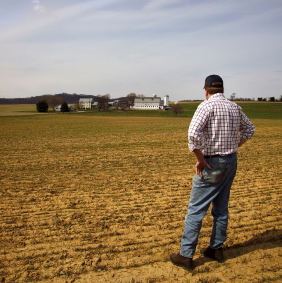 It’s more cold comfort for drought-stricken farmers this week, and I don’t mean the snow.
It’s more cold comfort for drought-stricken farmers this week, and I don’t mean the snow.
USDA chief economist Joe Glauber was all sunshine this Thursday in announcing that normal spring weather is expected to improve corn and soybean yields by huge percentages over last year’s tiny drought-stricken crops. Bigger yields mean tinier prices — Glauber said corn would be down about a third from last year, soy would drop more than a quarter, and wheat would be down about 11 percent.
From the South Dakota Argus Leader:
The recovery should send prices for most oilseeds and grains sharply lower, providing a much-needed reprieve for livestock, dairy and poultry producers struggling with high feed costs, and relief down the road for consumers who have paid more for food at their local grocery store. …
“The critical factor that people will be following is weather,” Glauber said at the department’s annual outlook forum. “While the outlook for 2013 remains bright, there are many uncertainties.”
Way to bury the lede, Glauber. No matter how many times Agriculture Secretary Tom Vilsack says “American agriculture is quite resilient,” there still remains the fact that American agriculture is also in crisis, and forecasters are expecting more hot and dry weather this year.
And even though industrial prices are dropping, the savings won’t trickle down to consumers for at least quite some time — the USDA anticipates food prices will rise this year between 3 and 4 percent.
Richard Volpe, an economist with USDA’s Economic Research Service, said the evidence of last year’s drought is just now starting to really have an effect on consumer prices at the retail level, resulting in higher costs for everything from meat to corn syrup.
Dammit, if it were only meat and corn syrup and not also everything in between…



